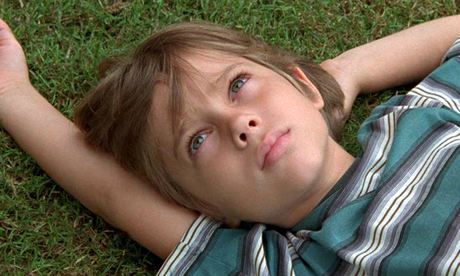
I blame Nick Hornby. In High Fidelity, a tale of mix-tapes and tangled relationships, the soundtrack as semiotic signifier reached a high-water mark. Movie directors now like to think that each significant moment in a character's life can be encapsulated with a few bars of a song that happened to be climbing the charts in the period concerned.
Back in the early 70s, however, American Graffiti set the template for the use of music in the bildungsroman movie and did so beautifully, as kids cruised the streets of Modesto, California, with the radios blaring. Thank God, it was set in 1962, so we are treated to Fats Domino, Buddy Holly and the Big Bopper. Richard Linklater's Dazed and Confused, in contrast, served up the turgid work of Aerosmith, Deep Purple and Alice Cooper. Linklater's Boyhood promises us a journey that spans the years between Coldplay's Yellow and Arcade Fire's Deep Blue. But do any of us actually know when this was?
More subtle directors know our memories are not shaped by the top 40, but by the sound coming out of a neighbour's window, the song your first love's mother played non-stop, the tune that a best friend left behind when they moved to another country.
The subtle and often contradictory associations carried by specific tunes – what the good people in the mood-music industry call its "topology" – are deeply subjective. Mike Nichols, the director of Regarding Henry, no doubt thought Walking On the Moon summed up the disabled state of his protagonist. But if, like me, you can't think about Sting without wanting to break furniture, then the mood will be soured.
Reading on mobile? Click to view
Quentin Tarantino understands that a counterintuitive approach works best when matching music to his characters' personalities. Everyone remembers his infamous use of a jaunty Stealers Wheel number in Reservoir Dogs, but there are many other examples. When John Travolta and Uma Thurman take to the dance floor in Pulp Fiction, the director could have plumped for something on trend by Snoop Dogg or Prince. Wonderfully, the couple don't dance to a hip tune, they dance to Chuck Berry's You Never Can Tell, making the tune they are dancing to hip. Tarantino pulls off the trick with even greater aplomb in Inglourious Basterds, when the anachronistic use of David Bowie's 80s hit Cat People perfectly signals the intent of a wartime heroine.
Reading on mobile? Click to view
Similarly, when Scorsese piles up the bodies in Goodfellas to the lyrical backing of Layla, or employs Be My Baby to sum up Harvey Keitel's tortured soul in Mean Streets, we go along with the artifice. We understand that in real life the hard men of Little Italy would probably rather listen to Billy Joel, if they listen to anything, but we are in search a greater truth.
One director who has a tin ear for an apposite soundtrack is Baz Luhrmann. He loads his movies with hip-hop superstars, cool brands and fashionable tracks until the whole enterprise collapses under the weight of its own self-regard. His ham-fisted mishmash of electronica, rap and rock in The Great Gatsby put me in mind not so much of a doomed lost generation as the addled crowd at kicking-out time in Ibiza.
So which mix of music and movies defines an era for you? Let us know in the comments below.

